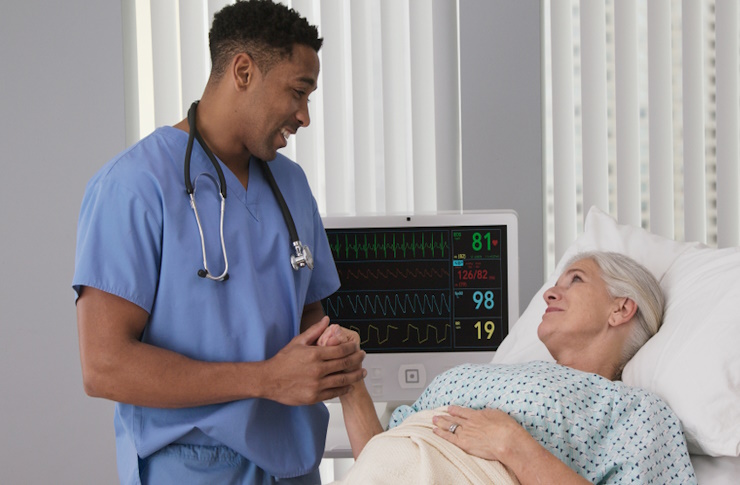Recognizing Early Symptoms That Might Indicate a Stroke
A stroke occurs when blood flow to part of the brain is interrupted or reduced, preventing brain tissue from getting oxygen and nutrients. Brain cells begin to die within minutes, making stroke a medical emergency that requires immediate attention. Recognizing the early warning signs of a stroke can mean the difference between recovery and long-term disability or even death. With approximately 795,000 Americans suffering strokes each year, understanding how to identify stroke symptoms quickly can save lives and minimize brain damage through prompt treatment.

Essential Early Symptoms of Stroke to Watch For
The most effective way to identify a stroke is to remember the acronym FAST: Face drooping, Arm weakness, Speech difficulties, and Time to call emergency services. Face drooping occurs when one side of the face droops or feels numb. Ask the person to smile—if their smile appears uneven or lopsided, this could indicate a stroke. Arm weakness manifests when one arm drifts downward when both arms are raised. Speech difficulties include slurred speech, inability to speak, or difficulty understanding speech. Time emphasizes the critical nature of seeking immediate medical attention if any of these symptoms are present, even if they seem to disappear.
Beyond the FAST method, other critical stroke symptoms include sudden numbness or weakness, especially on one side of the body; sudden confusion; sudden trouble seeing in one or both eyes; sudden trouble walking, dizziness, or loss of balance; and sudden severe headache with no known cause. These symptoms typically appear suddenly and without warning, highlighting the importance of recognizing them quickly.
How to Spot Early Symptoms of a Stroke?
Strokes can sometimes present with more subtle warning signs in the hours, days, or even weeks before a major event. These “mini-strokes” or transient ischemic attacks (TIAs) produce stroke-like symptoms that resolve within minutes or hours but serve as serious warning signs. Signs to watch for include brief episodes of weakness or numbness, temporary vision problems, fleeting speech difficulties, unexplained dizziness or unsteadiness, and temporary confusion.
Women may experience unique stroke symptoms that differ from the typical presentation. These include hiccups, nausea, general weakness, chest pain, shortness of breath, and heart palpitations. Additionally, women might experience sudden behavioral changes, agitation, hallucinations, or seizures. Being aware of these gender-specific symptoms is crucial for early identification and treatment.
Stroke Signs and Symptoms: Risk Factors and Prevention
Understanding personal risk factors can heighten awareness of potential stroke symptoms. High blood pressure is the leading cause of stroke and the most significant controllable risk factor. Other major risk factors include smoking, diabetes, high cholesterol, physical inactivity, obesity, and certain heart conditions like atrial fibrillation. Age also plays a role, with stroke risk doubling each decade after age 55, though strokes can occur at any age.
Family history and genetics contribute to stroke risk, making it essential for those with a family history of stroke to be particularly vigilant about symptoms. Certain ethnic groups, including African Americans, Hispanic Americans, Native Americans, and Alaska Natives, have higher stroke risks compared to non-Hispanic whites. Recognizing personal risk factors can help individuals take preventive measures and remain alert to potential symptoms.
Recognizing Key Signs of Stroke for Early Intervention
The timing of stroke intervention is critical—”time is brain” is the guiding principle in stroke treatment. For ischemic strokes (the most common type caused by blood clots), the clot-busting drug tissue plasminogen activator (tPA) must be administered within 3-4.5 hours of symptom onset for optimal effectiveness. For every minute a stroke goes untreated, approximately 1.9 million brain cells die, emphasizing why immediate recognition and response are vital.
A useful tool for bystanders is the “BEFAST” assessment, which expands on FAST by adding two additional checks: Balance and Eyes. Balance problems or loss of coordination and sudden vision changes can be crucial indicators of stroke. When observing someone with potential stroke symptoms, note the exact time when symptoms began, as this information is critical for treatment decisions. Never wait to see if symptoms resolve on their own—immediate emergency medical attention is essential even if symptoms appear to improve.
Stroke Treatment Options and Their Effectiveness
When stroke is identified early, several treatment options can significantly improve outcomes. For ischemic strokes, interventions include intravenous thrombolysis (tPA), which dissolves blood clots blocking blood flow to the brain, and mechanical thrombectomy, a procedure to physically remove large clots in major brain arteries. For hemorrhagic strokes (caused by bleeding in the brain), treatments focus on controlling bleeding and reducing pressure in the brain through surgical interventions or medication management.
The effectiveness of stroke treatment depends largely on how quickly intervention occurs. Patients who receive tPA within 90 minutes of symptom onset show substantially better outcomes than those treated later. Studies show that for every 100 patients treated with tPA within three hours, approximately 32 have better functional outcomes at three months compared to those who don’t receive the drug. Similarly, mechanical thrombectomy can reduce disability in 46% of appropriately selected patients when performed within 6-24 hours of symptom onset in certain types of strokes.
This article is for informational purposes only and should not be considered medical advice. Please consult a qualified healthcare professional for personalized guidance and treatment.




